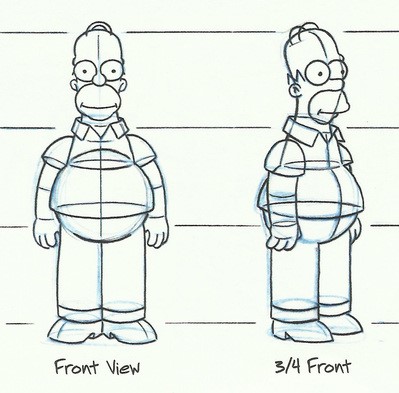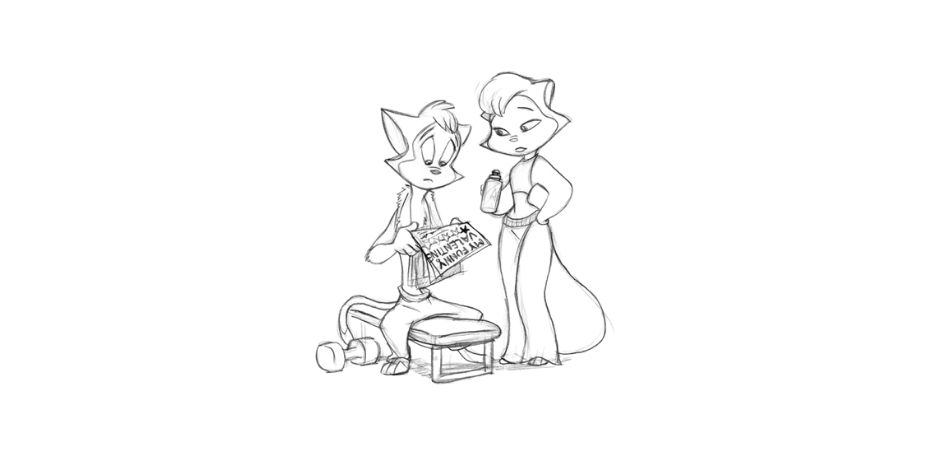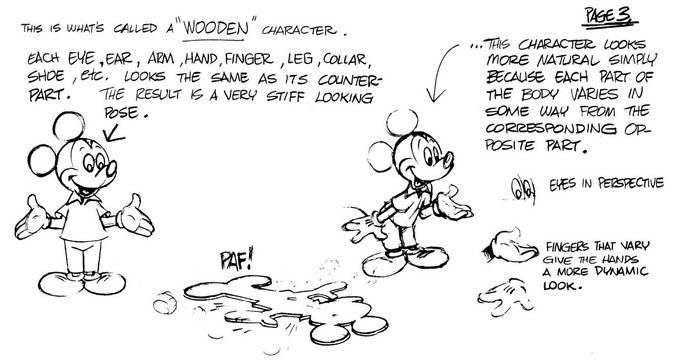The 12 Principles of animation are the most fundamental techniques every animator should master at. Among these 12 principles, the 11th principle of animation, Solid Drawing, hints at how to make realistic animations.
Animation is a complex technique, and it’s essential to understand its language. The two pioneers of animation, Ollie Johnston and Frank Thomas, created 12 principles of animation in 1981 in The Illusion of Life: Disney Animation, the greatest book in animation history.
All these principles adhere to the fundamental laws of physics. Moreover, these principles also account for appeal and emotion.
These principles came to the surface in the era of pencil sketching; however, these same principles of Disney also apply to digital animation as well.
If you want to create realistic yet appealing character animation, then my pals, you need to follow them religiously.
Origin Of The Principles Of Animation
Ollie Johnston and Frank Thomas introduced 12 principles of animation in their book The Illusion of Life: Disney Animation, in 1981.
In the book ‘The Illusion of Life: Disney Animation’ Johnston and Thomas defined the Solid Drawing principle as,
“Taking into account forms in the three-dimensional space, or giving them volume and weight.”
The animator must be a talented artist who understands the fundamentals of three-dimensional forms, anatomy, weight, balance, light, and shadow. This entailed attending painting school and sketching from life for the classical animator. Johnston and Thomas also advised against producing “twins”: figures whose left and right halves were identical and seemed lifeless.
Solid Drawing In Animation: The Definition
Solid drawing typically refers to adding weight, depth, and balance to a three-dimensional character and render it in two-dimensional space. For traditional animators, the solid drawing animation principle is more fundamental since the 12 Basic Principles of Animation were introduced way before the revolution of computerized animation.
Solid Drawing Animation is the technique that make any drawing believable on a 2D surface. Solid Drawing usually used in 2D animation and helps animators create a three-dimensional impression for the two-dimensional image.
An animator’s ability to draw an image from any viewpoint is critical. Once you have a solid sketch of the image, you can quickly animate it to give it a more realistic appearance.
The Primary Uses Of Solid Drawing In Animation
Almost everywhere, Solid Drawing Animation is employed. Solid Drawing is used to create an accurate drawing animation in terms of weight & volume, shadow, and the anatomy in a pose in 2D animation.
Animators must carefully consider the positioning of their 3D character rig in 3D animation. This involves ensuring the correct weight, balance, distribution, and a well-defined silhouette for the 3D character.
All 3D video graphics for films, games, advertisements, and cartoons use Solid Drawing to create lifelike 3D animation. While converting a solid picture to animation, the animator must ensure that the figures’ mass, size, and shape are generated according to their personalities and needs.
Examples of Solid Drawing In Animation
As we have mentioned earlier, this principle of animation applies to the traditional, also known as hand-drawn animation and digital animation styles.
If you’re not familiar with the traditional animation style, then first give a read to our blog, what is hand-drawn animation with movie examples.
Let’s take a look at the example of both styles.
A classic example of solid drawing animation
In this image extract from the book ‘The Illusion of Life Disney Animation’ by Frank Thomas and Ollie Johnston, you can see a great example of a solid drawing in the shape of a solid drawing.
It shows a couple of simple sketches of Mickey Mouse and notes about them that support the information we’ve already discussed, explaining how by simply placing a character at a slight angle, you can eliminate the element of “twining” and create a far more realistic three-dimensional character within your animation production.
Source: The Illusion of Life: Disney Animation
A contemporary example of solid drawing animation
Another artwork excerpt, this time from the book ‘The Simpsons Handbook, secret hints from the pros, can be found here. It demonstrates a clear example of solid drawing from a recent animation production.
Homer seems flat and cardboard-cutout-like when viewed from the ‘front perspective,’ while by tilting his head slightly to the right, the problem is remedied, and the artwork becomes more realistic and three-dimensional once more.

Source: Pinterest
How Should Animators Use Solid Drawing Principle To Make Animations?
The animator who develops the Solid Drawing should be an experienced draughtsman with experience drawing and laying down 3-dimensional shapes.
Additionally, he must comprehend the fundamentals of weight, light, anatomy, and shadow in order to generate a picture that can be translated onto a three-dimensional surface. The animator who converts the solid drawing to the computer screen must be proficient and have a firm grasp of composition, shadows, and lighting.
To create a more lifelike animation, the animator should also be familiar with the various camera angles, the image’s screen projection, negative space perspective, the character’s attitude and scale, and the figure’s visual balance in relation to other components of the screen.
Solid Drawing In Animation– FAQs
What is the solid drawing animation principle of Disney?
The solid drawing concept entails considering shapes in three-dimensional space or assigning them volume and weight. The animator must be a talented artist who understands the fundamentals of three-dimensional forms, anatomy, weight, balance, shadow, and shadow.
What is the 11th principle of animation?
The 11th principle of animation is Solid Drawing.
How many principles of animation are there, and what are they?
There are 12 principles of animation, which are:
- Squash and stretch
- Anticipation
- Staging
- Straight ahead action and pose-to-pose
- Overlapping action
- Slow in and slow out
- Arc
- Secondary action
- Timing
- Exaggeration
- Solid drawing
- Appeal
What do you mean by solid drawing and appeal?
A technique of animation used to give your animated objects a solid, steady and realistic portrayal is called solid drawing. Without solid drawing, your animations will appear flat and two-dimensional that make your animated objects unappealing until or unless you want to use if for a specific effect.
How is the animation principle of solid drawing applied to a 3D scene?
The animation principle of solid drawing is applied to a 3D animation by positioning your 3D character rig accurately and make sure a correct weight, balance ratio, and clear silhouette is there. On the other hand, in 2D animation, solid drawing animation is all about making a drawing in terms of weight, volume, shadow, balance, and the character anatomy in a pose.
What is the most used animation principle?
The most used animation principle is arguably the Squash and Stretch. It is perhaps among the 12 principles of animation that is the most fundamental. Squash and stretch animation principle is implied to give a flexibility or weight animated to objects or people.
Closing Remarks
We hope you’ve enjoyed the interpretation of the 11th principle of animation – Solid Drawing Animation.
But this is only one principle of animation. If you want to become a successful and well-versed animator, you need to abide by all the 12 principles of animation.
If you’re searching for a creative team of animation artists, then hire team BuzzFlick – we are one of the par-excellent video animation companies. Our revolutionary animation creators are highly skilled and professional and capable of creating unique animations that grab your audience’s attention efficiently.
Now that we have reached the end, we hope this blog will be of great help to you. Good luck with your animation project.




